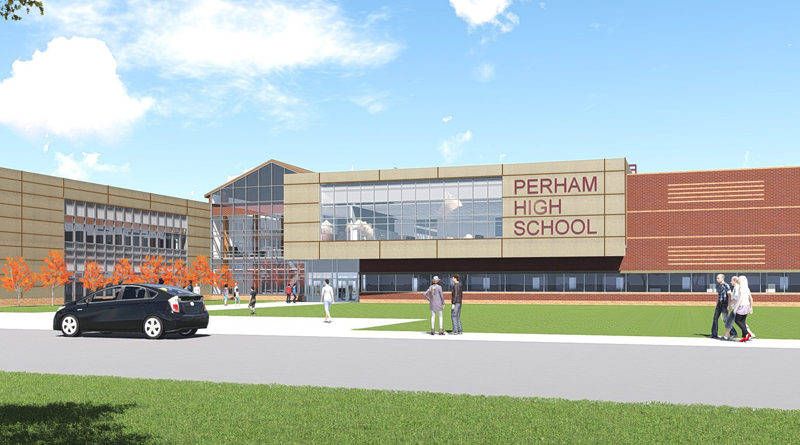TSP Architecture Delivers Modern Design for New High School
By Roxanne Squires
PERHAM, Minn. – TSP Architecture has successfully completed renovation to the Perham High School project, providing both students and staff with a freshly updated and modernized facility for a new school year.
TSP Architecture and BHH partnered together to create a design of flexibility in meeting with the ever-changing technologies and 21st century educational trends of today, while also separating the operations and student body by age, and utilizing the connection of the nearby middle school by creating shared functional efficiencies.
Perham High School’s new building bolsters space in function, adjacencies and right-sizing to assist in the current style of education delivery and learning styles – which was lacking in the previous facility.
District staff deliberately sought student input – finding consensus on what was desired as well as reviewing what worked or did not work in the previous facility.
Student representatives were able to serve on the Facility Planning Committee during the conceptual planning stage. The design was presented to the public at strategic intervals during the process for information sharing, input gathering and idea implementation.
The team ultimately sought a design that would allow the new school to follow contemporary educational trends; including providing flexible spaces, in size, arrangement and proper sizing.
The first example includes the design of the building is organized around a central, two-story space known as the “Great Hall,” noted for its ample daylight, and features student dining, food service and a public function common/gathering/reception space.
This area operates as a centrally located organizational “hinge” for the floor plan with the building’s main entry located near this particular juncture. The academic area is on one side of the Great Hall, while shared support spaces such as administrative offices, the gymnasium and physical education spaces, visual arts and performing arts are on the other. The overall intention of this design was to create controlled zoning between these differing functions.

